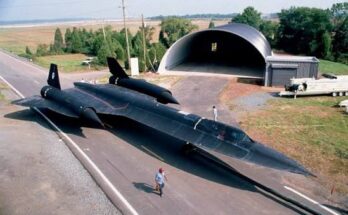
The Hindenburg disaster remains one of the most iconic and tragic moments in aviation history. Captured in rare archival footage, the destruction of the German passenger airship LZ 129 Hindenburg on May 6, 1937, marked the abrupt end of the era of luxury airship travel. As the Hindenburg attempted to land at the Naval Air Station in Lakehurst, New Jersey, it suddenly burst into flames, resulting in the deaths of 36 people. The haunting visual footage, with billowing smoke and the massive structure collapsing in flames, was one of the first major disasters to be caught on film, etching the tragedy into the public consciousness.
Built by the Zeppelin Company, the Hindenburg was a marvel of engineering for its time. Stretching 804 feet long and filled with hydrogen gas, it was designed to be a floating palace in the sky. It offered passengers luxurious amenities, such as fine dining, observation windows, and even a grand piano. The Hindenburg made regular transatlantic trips between Europe and the United States and was a symbol of national pride in Nazi Germany.

On its final voyage, the Hindenburg had departed from Frankfurt and was completing its journey in New Jersey. Weather delays had caused the landing to be postponed, and as the ship finally approached the mooring mast, a fire broke out near the rear of the vessel. Within seconds, the entire airship was engulfed in flames. The explosion was so sudden and intense that many of the 97 people onboard had little time to react. Miraculously, 62 people survived the disaster, many by jumping from the airship before it hit the ground.
What caused the Hindenburg to catch fire has been the subject of debate for decades. While some believed sabotage played a role, the most widely accepted explanation is a static spark igniting leaking hydrogen, possibly exacerbated by weather conditions and the materials used in the airship’s construction. The disaster led to a swift decline in the use of hydrogen-filled airships, and airship travel never recovered its popularity.
The rare footage of the Hindenburg disaster was captured by several newsreel companies, including Pathé News and Universal. These clips, some in black and white and others later colorized, provide a gripping visual of the moments leading up to and during the fiery crash. Perhaps most famously, radio reporter Herbert Morrison’s emotional eyewitness report—“Oh, the humanity!”—became one of the most remembered lines in broadcast history.

Even today, the Hindenburg disaster stands as a stark reminder of the risks of early aviation and the power of media to capture and shape public perception. The rare footage continues to be studied by historians, engineers, and aviation enthusiasts alike, offering insight into the tragedy that ended the age of the great airships.
“Inferno in the Sky: Unearthed Footage of the Hindenburg Tragedy That Changed Aviation Forever”
Let me know if you’d like this rewritten in a different tone or for a specific platform (e.g., YouTube, blog, academic article, etc.).


